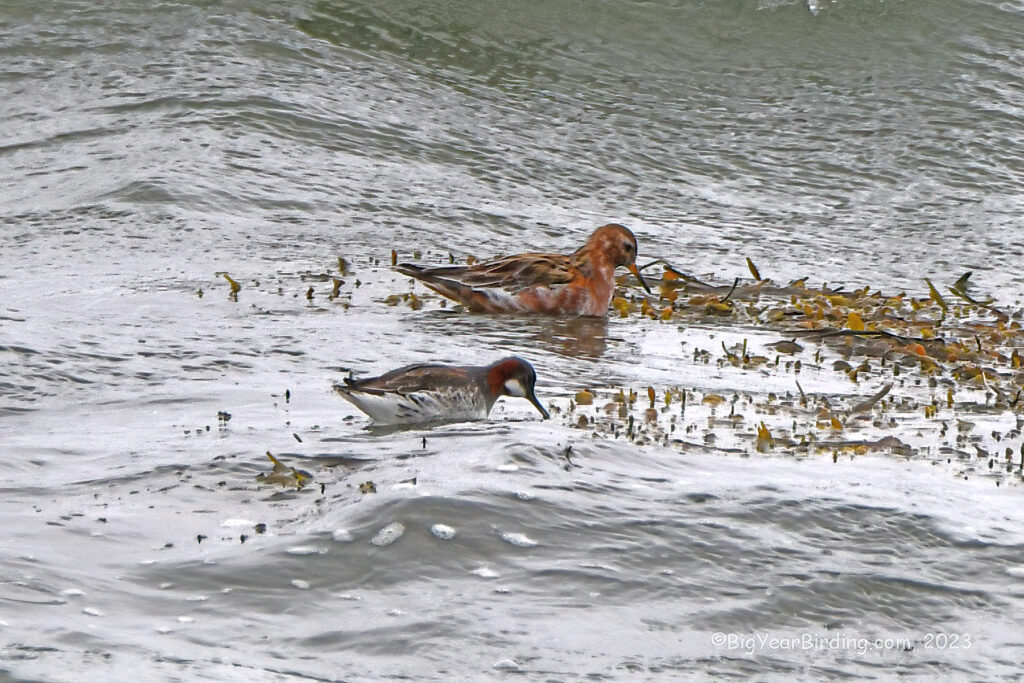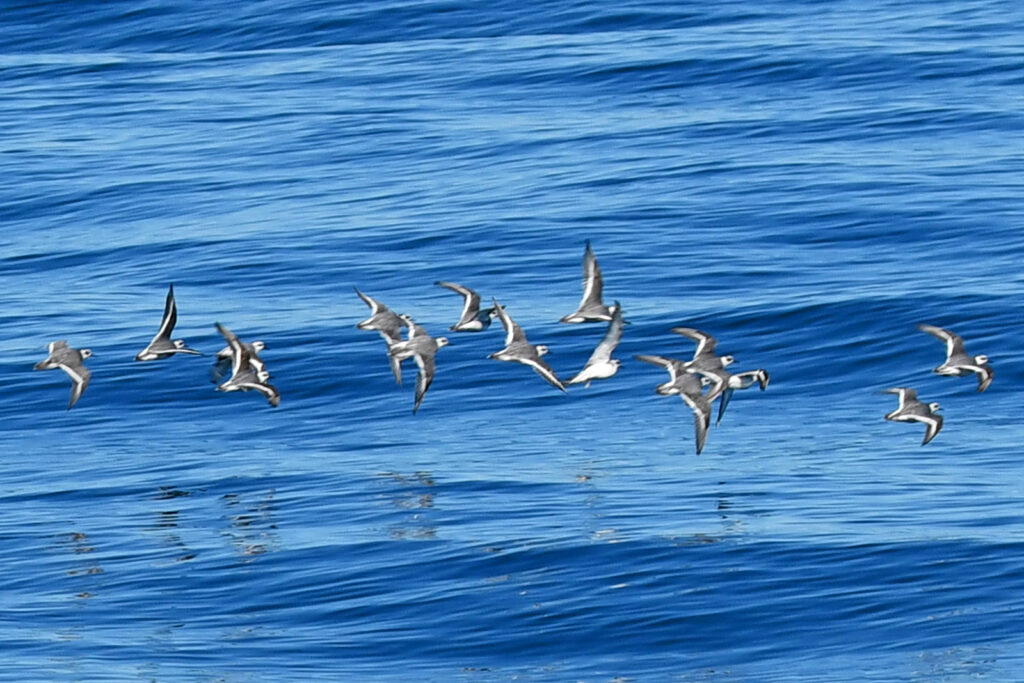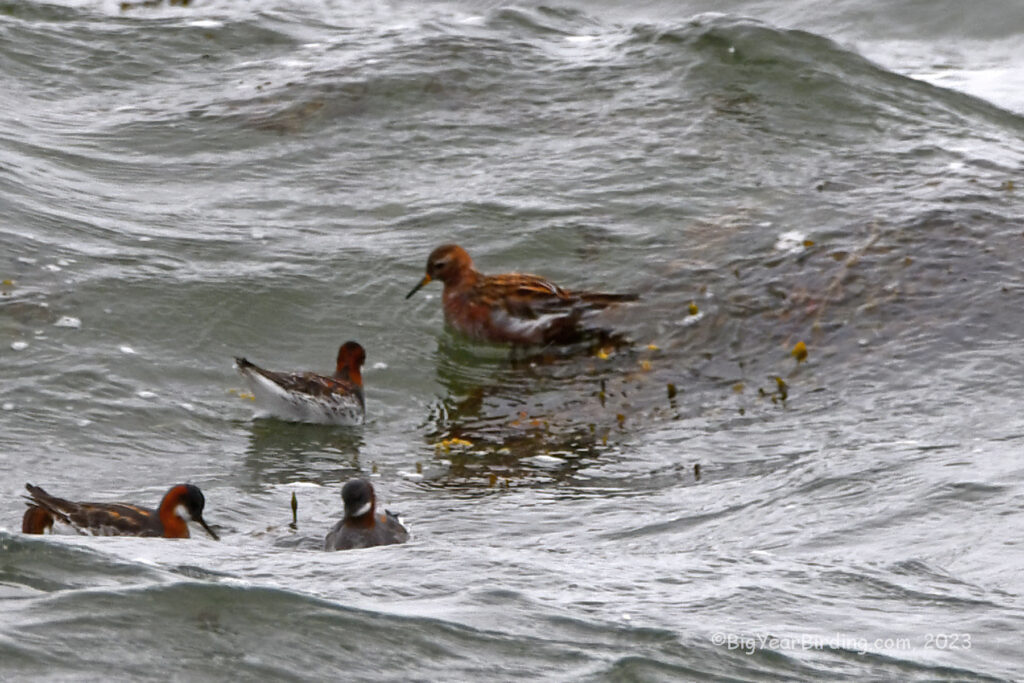
Red-necked Phalarope (bottom)
There are believed to be a combined 8 million Red and Red-necked Phalaropes on planet earth . . . but unless you live in the Arctic regions or spend time out at sea . . . you’ll probably never see either one.
That’s because these birds spend winters in tropical oceans far from land. In the spring, Phalaropes migrate to the Arctic tundra where the brightly colored females lay their eggs and then immediately head south again.
In a reversal of typical avian appearance and roles, the plainer colored male Phalarope sits on the eggs and takes care of the young until they fledge.
Ingrid and I see the Red and Red-necked Phalaropes in the late summer and early fall, far out at sea on pelagic trips or whale watches. Typically, they have lost their breeding plumage, and these tiny whitish-gray birds are difficult to follow on the ocean waves.

This weekend there was a massive storm along the Eastern seaboard which blew ashore migrating Phalaropes (typically far out at sea).
Thousands have been seen off Cape Cod. A handful have been reported at a sewage treatment plant in southwestern Maine.
And today Ingrid and I found dozens of tiny Red-necked Phalaropes (1.3 oz) a few feet from a beach in Cape Elizabeth. There were three of the slightly larger Red Phalaropes (2.1 oz) in the flock. To see both of these birds together . . . close to shore . . . in breeding plumage is remarkable.

It was pouring rain, but the birds were so close to the parking lot that we were able to stay relatively dry in the car.

As soon as the storm ends . . . these birds will regroup and head north . . . but this fluke storm gave us a wonderful opportunity to observe this rare ornithological event.

